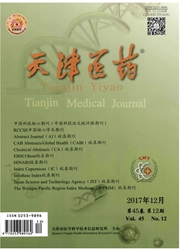

 中文摘要:
中文摘要:
目的:采用实时定量端粒重复序列扩增法(RQ-TRAP法)检测不同细胞端粒酶活性。方法用RQ-TRAP和TRAP-ELISA两种方法同时检测12种细胞的端粒酶活性,并比较两种方法的检测结果。结果 RQ-TRAP方法能准确特异地检测系列稀释的293T细胞蛋白提取液的端粒酶活性,灵敏度可达8个细胞,扩增效率为98.92%。阴性对照组则未检测到端粒酶活性。RQ-TRAP方法测得12个细胞系中端粒酶的活性与TRAP-ELISA方法结果有较强相关性(r2=0.7625)。两种方法检测肿瘤细胞端粒酶活性均高于正常细胞。结论 RQ-TRAP方法检测端粒酶可行,比TRAP-ELISA方法成本低、时间短,且支持高通量,是一种新的可快速可靠定量端粒酶活性的方法。
 英文摘要:
英文摘要:
Objective To establish methodology to detect telomerase activity based on real-time quantitative PCR technique combined with telomeric repeat amplification protocol (TRAP). Methods RQ-TRAP system was developed by combining real-time quantitative PCR technique with conventional TRAP method. Telomerase activity was assessed and compared by RQ-TRAP assay and TRAP connected with enzyme-linked immunosorbent assay (TRAP-ELISA) respectively in 12 kinds of cells. Results The RQ-TRAP method was both accurate and specified in measuring telomerase activity in a series dilution of protein extracts from 293T cells. The sensitivity of this method was 8 cells and the amplification efficiency was 98.92%. Telomerase activity was not detected in negative control group. Statistical analysis revealed a strong correlation between the two assays (r2=0.762 5). Conclusion The feasibility of RQ-TRAP was proved in this article. Compared with TRAP-ELISA, RQ-TRAP has many advantages. Apart from sample extraction and real-time PCR cycling, no other extra time-consuming steps are needed for telomerase quantification;RQ-TRAP is less costly and more rapid and reliable than TRAP-ELISA for quantification of telomerase activity and it also support high throughput.
 同期刊论文项目
同期刊论文项目
 同项目期刊论文
同项目期刊论文
 期刊信息
期刊信息
